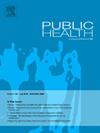Measuring health literacy in older people: a scoping review
IF 3.9
3区 医学
Q1 PUBLIC, ENVIRONMENTAL & OCCUPATIONAL HEALTH
引用次数: 0
Abstract
Objective
To collect and compare studies that measured health literacy (HL) in older adults.
Study design
Scoping Review.
Methods
A literature search in PubMed, Embase, Scopus and Web of Science, was conducted in 2023, including studies published in English and Italian. Inclusion criteria involved primary studies that provided a quantitative HL measurement in people aged 60 years and more. Articles examining people recruited from hospitals or emergency rooms and those selecting participants with specific diseases, except for newly diagnosed patients, were excluded.
Results
Our literature search yielded a total of 6374 records, with 158 articles meeting the inclusion criteria. The most frequently used tools were the S-TOFHLA, HLS-EU-Q16, NVS, HLS-EU-Q47, Communicative and Critical Health Literacy Scale, TOFHLA and REALM. Some differences emerged, even among studies using the same tool. These differences may be due to variations in reporting results (e.g., means, cutoffs, or other formats) or discrepancies in scoring scales, which may have different ranges or apply cutoff scores differently.
Conclusions
Our results identified a wide range of tools used, with considerable variation even when the same instrument was employed, particularly in scoring methods and the definition of cutoffs to distinguish HL levels. Many papers were excluded because age-specific data for older adults were not extractable, therefore reporting results by age group should be encouraged.
衡量老年人健康素养:范围审查
目的收集和比较有关老年人健康素养(HL)的研究。研究设计范围审查。方法检索PubMed、Embase、Scopus和Web of Science于2023年发表的英文和意大利语文献。纳入标准涉及提供60岁及以上人群HL定量测量的初步研究。研究从医院或急诊室招募的人以及选择患有特定疾病的参与者(新诊断的患者除外)的文章被排除在外。结果共检索到6374篇文献,符合纳入标准的文献158篇。最常用的工具是S-TOFHLA、HLS-EU-Q16、NVS、HLS-EU-Q47、交际和关键健康素养量表、TOFHLA和REALM。即使在使用同一工具的研究中,也出现了一些差异。这些差异可能是由于报告结果的差异(例如,平均值、截止点或其他格式)或评分量表的差异,评分量表可能有不同的范围或应用不同的截止点分数。结论sour的结果确定了广泛使用的工具,即使使用相同的工具,也存在相当大的差异,特别是在评分方法和区分HL水平的截止值定义方面。许多论文被排除在外,因为老年人的特定年龄数据无法提取,因此应鼓励按年龄组报告结果。
本文章由计算机程序翻译,如有差异,请以英文原文为准。
求助全文
约1分钟内获得全文
求助全文
来源期刊

Public Health
医学-公共卫生、环境卫生与职业卫生
CiteScore
7.60
自引率
0.00%
发文量
280
审稿时长
37 days
期刊介绍:
Public Health is an international, multidisciplinary peer-reviewed journal. It publishes original papers, reviews and short reports on all aspects of the science, philosophy, and practice of public health.
 求助内容:
求助内容: 应助结果提醒方式:
应助结果提醒方式:


